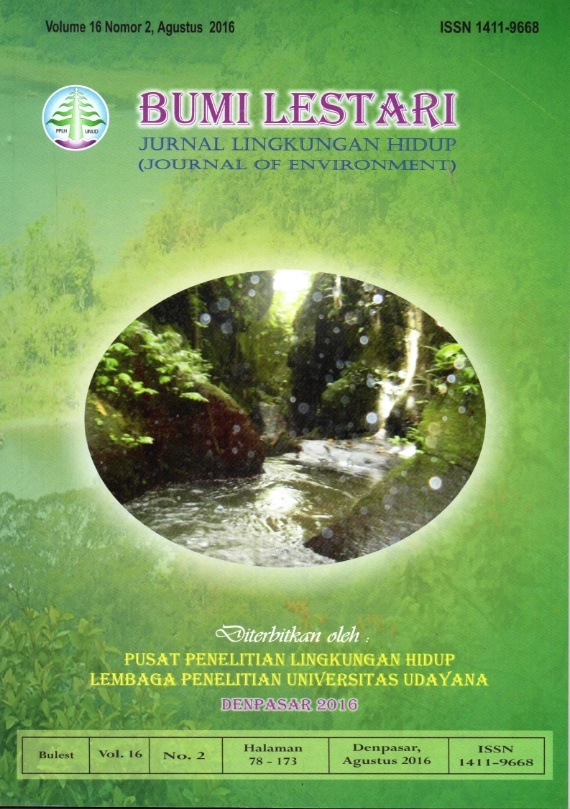Evaluasi Kesesuaian Lahan Sumba Tengah Untuk Tanaman Pangan Serta Perancangan Pola Tanamnya Yang Spesifik Lokasi
Abstrak
The regency of Sumba Tengah in the province of East Nusa Tenggara relies on rainfall to support its dry land agriculture hence should be supported with land suitability evaluation and cropping pattern design for a more sustainable crop production. This study aims to evaluate land suitability for food crops in Sumba Tengah and formulate the appropriate precipitation-based cropping patterns. This work was carried out from March to June 2015. Stages of research were: 1) characterizing land attributes (climate and soil) by soil analysis and desk study, 2) assessing land suitability level by comparing land attributes and crops requirements, and 3) composing feasible cropping patterns by using water balance method. Soils of Sumba Tengah varied from sandy to clayey with low to neutral pH and low to very high content of organic carbon and nitrogen. Phosphate and potassium availability was very low. Sumba Tengah was exposed to only four wet months a year with annual precipitation of less than 2000 mm. This region was highly and moderately suitable for growing paddy, maize, tubers, and legumes. It was not suitable for wheat. Some of the northern part was arable merely for one cropping season in a year, mostly from December to April, with the alternative of growing paddy or other crops. The remaining was likely to cultivate for two cropping seasons. Legumes were recommended to include in the rotation for soil conservation. Shortage of irrigation led to the unlikeliness of three cropping seasons in a year.
##plugins.generic.usageStats.downloads##
Kata Kunci
Authors who publish with this journal agree to the following terms:
- All articles published by Bumi Lestari Journal of Environment and Environmental Reseach Center Udayana University are made available under an open access license worldwide immediately. This means everyone has free and unlimited access to the full-text of all articles published in Bumi Lestari Journal of Environment, and everyone is free to re-use the published material given proper accreditation/citation of the original publication. Open access publication is supported by authors' institutes or research funding agency by payment of a comparatively article processing charge for accepted articles (See Author Fees). Bumi Lestari Journal of Environment and Environmental Reseach Center Udayana University publish articles under the Creative Commons Attribution License.
- Authors are able to enter into separate, additional contractual arrangements for the non-exclusive distribution of the journal's published version of the work (e.g., post it to an institutional repository or publish it in a book), with an acknowledgement of its initial publication in this journal.
- Authors are permitted and encouraged to post their work online (e.g., in institutional repositories or on their website) prior to and during the submission process, as it can lead to productive exchanges, as well as earlier and greater citation of published work (See The Effect of Open Access).





